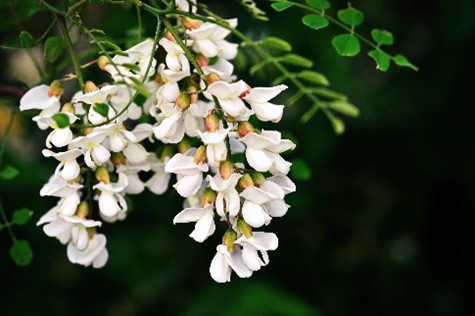Bare Root Tree Profiles
Welcome to our Bare Root Tree Profile page. Here, you’ll discover information on a wide array of trees available through our community initiative, helping you select the perfect addition to your landscape.
- Detailed Descriptions: Click each tree to view its characteristics, growth requirements, and environmental benefits.
- Usage Tips: Learn how to effectively incorporate trees into your space for aesthetics, shade, or ecological benefits.
- Care Guides: Find essential care instructions to ensure your trees thrive and contribute to a sustainable environment.

Honey Locust
The thornless Honey Locust has captured the hearts of arborists, community foresters and homeowners throughout North America. This tree is easy to plant, grows fast, has reasonably strong branches, is aesthetically pleasing and is tough enough to withstand just about any urban setting.
Green during summer and turning a unique shade of yellow in the fall. The leaves on the Honey locust are more delicate in appearance.
The honey Locust produces large brown seed pods that resemble leather straps.
Fast (60cm per year)
50-150 years
10-20m
Full sun
Adaptable to different soil conditions.
Honey Locust plant bugs. Cankers can develop on the tree and eventually girdle and lead to the death of the tree.
Pruning is recommended to maintain shape, size, and structure. Pruning is recommended to be done in the spring before leaves appear.
The Honey Locust is an ideal tree for urban planting. If residents would like to view Honey Locust trees, there are several trees planted within the downtown core on Bridge Street.
Remember to obtain locates from ON1Call website ontarioonecall.ca before the tree is planted to avoid damaging any underground utilities.
A Quick Guide to Planting Bare Root Trees
Planting bare root trees is a fantastic way to bring beauty, shade, and life to your backyard while helping the environment. Trees filter our air, provide habitat for wildlife, and even hold the promise of childhood adventures with treehouses. Here’s how you can plant a tree with ease and ensure it thrives:
Plan Ahead
Timing is everything. Plant your tree during the dormant seasons—spring or fall. Visualize your yard and consider your tree’s future height and shape. Avoid planting under utility lines and keep a safe distance from structures:
- Small Trees (<7m): 2m away from lines, 3m from your home.
- Medium Trees (7-18m): 6m from lines, 4m from home.
- Large Trees (>18m): 12m away from lines, 5m from home.
Prepare the Spot
Scope out the area before picking up your tree. Clear a 50cm radius of grass and weeds. Dig a hole twice the size of the root system—an ideal home for your tree’s roots.
Minimize Stress
During transport, keep roots moist. This is crucial. Think wet burlap or mulch to shield them. Don’t let branches get bruised—handle with care.
Planting Time
Get that tree in the ground as soon as it arrives. Straighten out its roots, letting them fan out comfortably. Protect them from direct sun and winds to prevent drying out. Place the root crown on a mound in the hole, fill halfway with soil, stomp down to remove air pockets, fill with water, then top off with soil. Shape a ridge around the base to help with watering.
TLC – Water, Stake, Mulch
Water your tree deeply, especially during dry spells. Mulch around the base to keep moisture in, but leave space around the trunk to prevent rot. Stake if needed for support against winds.
Remember to visit OntarioOneCall before you dig to avoid utilities. With these easy steps, your tree will flourish and contribute to Carleton Place, one tree at a time.

